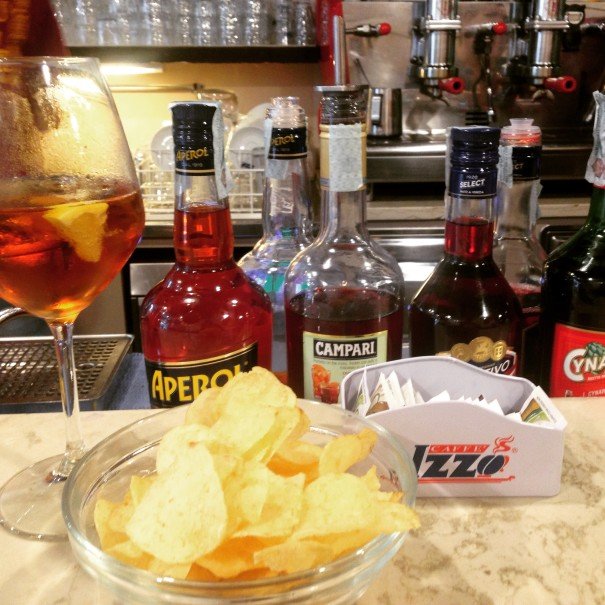
A Welcome Sign of After‑Hours Life in a Museum City

A Welcome Sign of After‑Hours Life in a Museum City
Spritz in Venice
Venice is a liquid city in every possible way. Even when you’re standing on (relatively) solid land you feel damp; the water that surrounds you seeps up, combining with the heat to give the effect of being in a giant glasshouse, a continuous cycle of evaporation and condensation. Like all forms of constant immersion, this produces the somewhat paradoxical effect of dehydration.
The only way to combat this is to do as the Venetians do and maintain a steady drip of fluids throughout your stay in the lagoon. This is somewhere that definitely subscribes to the “5 o’clock somewhere” principle: we’re talking about a place where wine is often literally on tap; a place where locals drop into their corner cantina for a beverage on the go whether it’s 11 am or 6 pm.
The ubiquitous Venetian remedy of choice is the spritz, perhaps unsurprising given that they claim to have invented it. The deceptively weak concoction is perfectly suited to the delicate art of day-time drinking: it calibrates the ideal hazy buzz without ever tipping you into the deep end of sunlit wastedness.
Unlike in other parts of the world where the spritz has become a high-end status item, the Venetian spritz is a working class staple, served without fanfare or flourish, often in tumblers or large, balloon wine glasses. The mix of wine and seltzer is rumored to have been introduced during Austro-Hungarian occupation, when the overlords found the local drops a bit too strong for their refined Northern palates. Rather than abstain, they opted to water them down. The Italians seemed to have added back in the extra booze to even things up a bit, resulting in today’s mix of prosecco or white wine, seltzer, and spirit.
The Aperol spritz might now be an international institution thanks to the advertising outlay of its parent company, but order a spritz in Venice and people will ask you “which kind?” There are in fact four different types. In Italy, the Aperol spritz is considered to be the gateway drug, the sweetest of the lot, they are popular with students and undeniably easy to consume. The other three options are Campari, the most dry; Cynar, made from artichokes; and Select, mysteriously unavailable outside of Venice. It’s the same radioactive vermillion as Campari and Aperol and somewhere in between the two in flavor profile. My favorite is the spritz al Cynar, the dark liqueur rendering the drink a murky brown with a distinct, earthy flavor.
The best spritz haunt I discovered in Venice was the Riccio Peoco, an unassuming place on the Campo Santi Apostoli that distinguished itself as I was walking home after dinner for the mere fact that it was open. That may sound like I have low standards, but Venice after midnight is a ghost town. Devoid of non-water borne traffic it’s eerily quiet; all you can hear are your own footsteps slapping the ancient flagstones, the hypnotic sound of lapping water, and the distant echoes of other people navigating their way through the labyrinth of tiny calle.
But that night, Riccio Peoco appeared to me like a phantom, a welcome sign of life (or afterlife) in the museum city. Thrilled by the prospect of some unexpected late night action, I promptly ordered my standard spritz al cynar and bonded with the bartender over our mutual irritation at the unofficial Venetian curfew. While I sipped happily away the regulars bogarted the TV, playing an eclectic selection of music videos from Celine Dion to Elton John while downing their own spritzes of choice and prosecco on tap. I took a seat, content to soak up the atmosphere. Smiling to myself I silently toasted the surprising flow of this slippery city, and where it will take you if you let it.